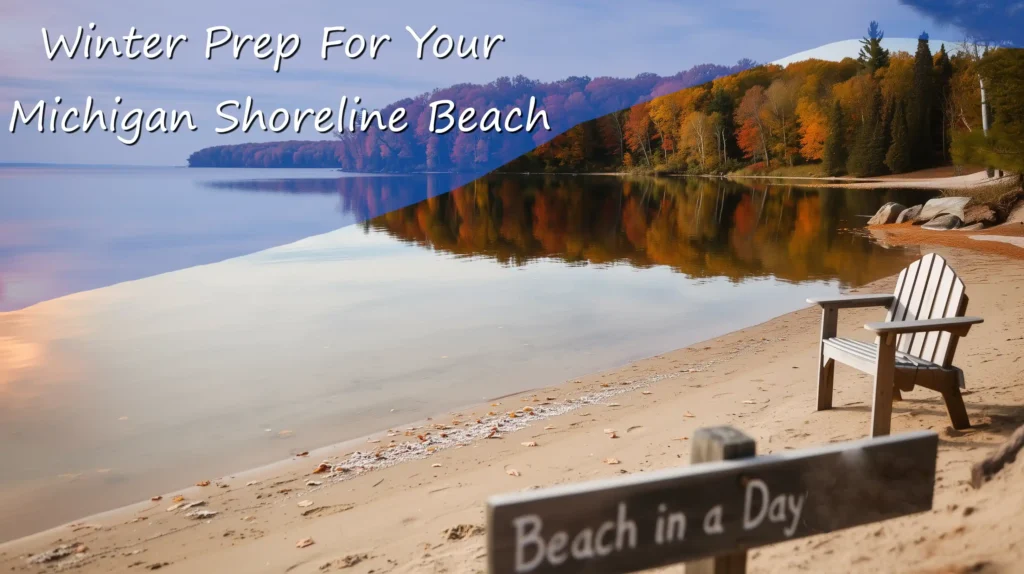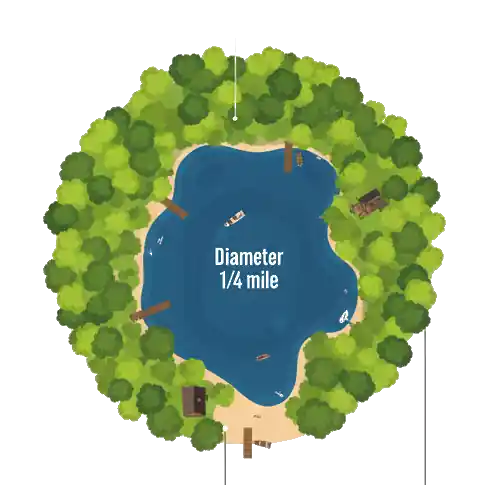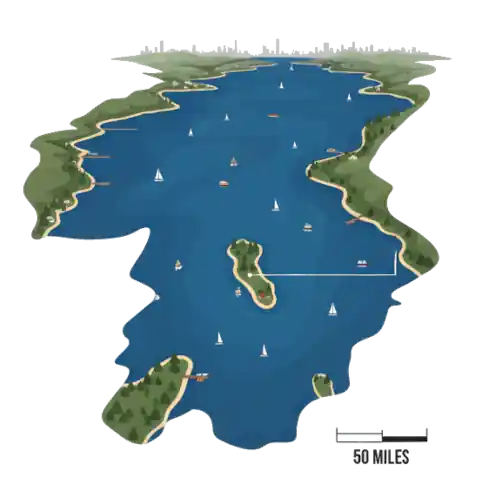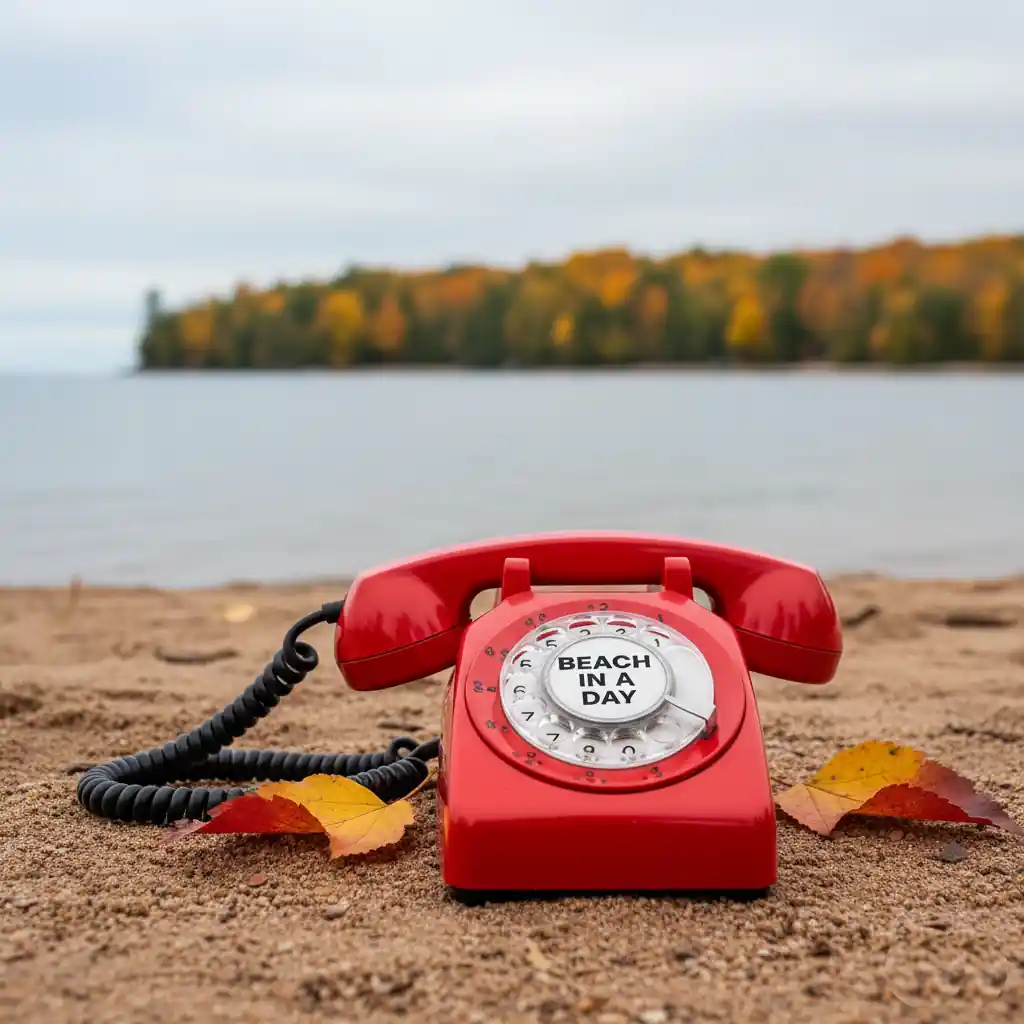
As the leaves change and temperatures drop across Michigan, it’s time to start preparing your shoreline beach for winter. What begins as a peaceful freeze can quickly become a season of ice heaving, erosion, and sand displacement—especially if your shoreline isn’t properly protected. At Beach in a Day, we’ve seen how winter conditions can transform a well-maintained beach into a mucky, uneven shoreline by spring.
In this guide, we’ll explain how ice affects different types of inland lakes and offer practical steps to protect your investment. You’ll learn the differences between smaller and larger lake systems, the risks of winter damage, and how to take preventative action before the deep freeze sets in.
Understanding Ice Damage on Michigan Shorelines
Michigan winters create unique shoreline challenges. Ice damage typically occurs through:
- Ice Heaving: Expanding ice pushes against the shoreline, shifting sand and soil.
- Ice Ridges: Wind and wave movement pile ice and debris along the shore.
When ice cover is incomplete—a concern in a warmer winters—open water allows wave energy to reach the beach, causing accelerated erosion.
Small Inland Lakes (Under a Few Hundred Acres)

Smaller lakes tend to have limited wave action, so winter damage is often caused by gradual ice expansion and contraction. While less dramatic, freeze-thaw cycles can still shift sand and expose muck. Learn more about our beach restoration services
Large Inland Lakes (1,000+ Acres, e.g., Houghton Lake)

Larger lakes experience stronger winds and greater fetch, leading to more aggressive ice push and erosion. Winter waves can reshape beaches, particularly if shoreline erosion was already weakened during summer.
Step-by-Step Winter Preparation Tips
The best winter preparation relies on natural, EGLE-friendly methods rather than hard structures. With a little foresight, you can protect your beach and avoid costly repairs in spring.
1. Inspect and Clear Your Shoreline
Start with a careful walkthrough:
- Look for signs of erosion, exposed roots, or thinning sand.
- Remove loose furniture, toys, or docks at risk of shifting.
- Lightly rake debris—but leave existing vegetation in place for stability.
On larger lakes, check for wave-scoured areas from fall storms. Persistent muck issues may need spring attention.
Check our DIY guide to permanently removing lake muck
2. Reinforce with Natural Barriers
Nature provides the strongest defense against winter ice. Recommended shoreline protections:
- Native vegetation (switchgrass, willows, sedges) to stabilize edges.
- Buffer strips to absorb wave and ice impact.
- Riprap stone (only when necessary) on high-energy shorelines.
On smaller lakes, vegetation alone may be sufficient. On larger lakes, combining vegetation and stone offers more resilience over winter.
See how our beach installation and SandPro System incorporate these
3. Manage Water Levels & Monitor Weather
Some Michigan lakes with dam systems lower water levels in fall to reduce ice pressure. If your lake association participates, coordinate where possible.For unmanaged lakes:
- Leave shoreline vegetation standing—stems and roots help anchor sand.
- Monitor extreme freeze-thaw events or early storms—these conditions can lead to unexpected winter erosion.
4. Protect Sandy Beach Areas
If your shoreline includes a man-made beach, especially one installed professionally, take time to preserve elevation and sand integrity.
- Avoid chemical de-icers near the water.
- Consider fall sand renourishment where elevation has dropped.
- If you have geotextile fabric (Typar) installed, it will help resist deep washout and muck return.
For DIY-built beaches, ensure a gentle slope to the waterline to prevent freeze pooling and displacement.
Explore our beach restoration options for lasting protection
When to Call the Professionals

While much of winter prep can be done by homeowners, some shorelines—especially on larger lakes—may require professional reinforcement.A professional shoreline team can:
- Identify weak areas prone to winter loss.
- Rebuild elevation and stabilize transitions.
- Integrate ice-resistant elements during installation.
At Beach in a Day, our SandPro beach systems are designed for Michigan winters, built to withstand heaving, erosion, and early thaws without damaging your property.
Preserve Your Beach Through Winter
Michigan winters are powerful, but with proper preparation, your shoreline doesn’t have to suffer. Simple fall steps can protect your investment and ensure your beach is ready for spring—not repair.If you’re unsure where to begin or want expert advice tailored to your lake, we’re here to help with shoreline inspections and spring restoration planning.
Contact Beach in a Day today to keep your waterfront beautiful year-round.
Contact Us Today For A FREE Beach Consultation!About Beach in a Day
We install and restore custom lakefront beaches using our proprietary SandPro System—no heavy equipment across your yard, just lasting sand, stable shorelines, and beaches designed for Michigan life.
